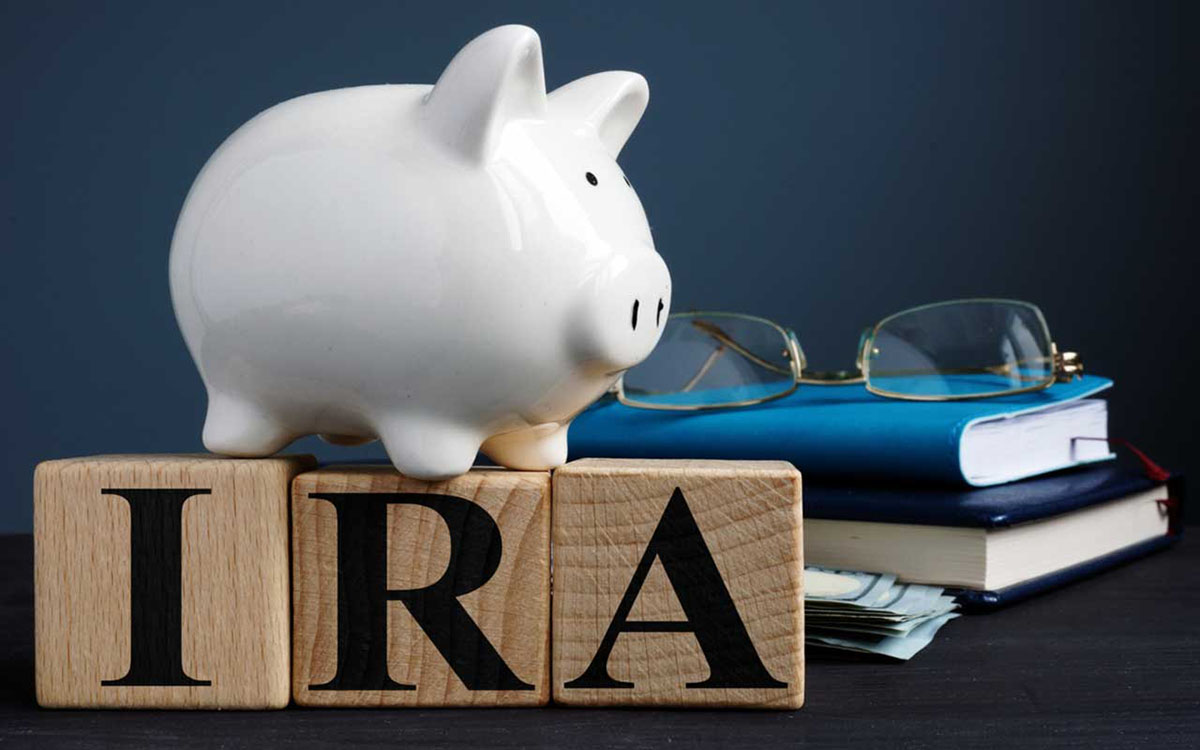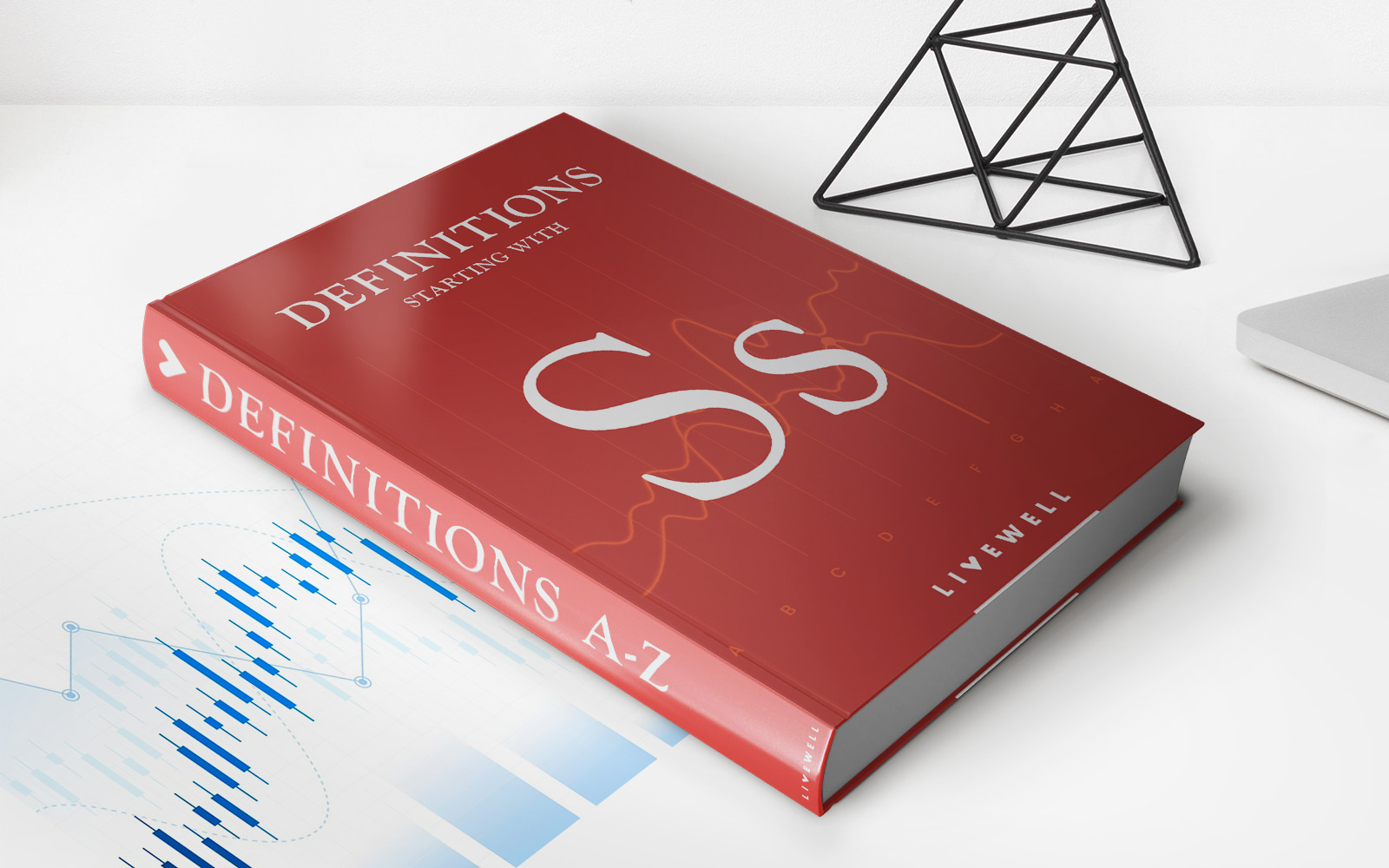

Finance
What Are Savings Account Dividends?
Published: January 3, 2024
Learn about finance and how savings account dividends can help grow your money. Find out how to maximize your savings with dividends and achieve your financial goals.
(Many of the links in this article redirect to a specific reviewed product. Your purchase of these products through affiliate links helps to generate commission for LiveWell, at no extra cost. Learn more)
Table of Contents
Introduction
When it comes to saving money, most people are familiar with the concept of a savings account. However, many may not be aware that savings accounts can earn dividends, which can provide an additional source of income. Understanding what savings account dividends are and how they work is crucial for individuals looking to maximize their savings potential.
Savings account dividends are essentially the interest earnings that financial institutions pay to account holders for keeping their money in a savings account. These dividends are typically calculated based on the balance in the account and the interest rate offered by the institution. Unlike other types of investments, such as stocks or bonds, savings account dividends are considered a low-risk form of investment.
In this article, we will delve into the details of savings account dividends. We will explore how they are calculated, the benefits of earning dividends, factors that can affect the amount of dividends earned, and strategies to maximize savings account dividends. Additionally, we will discuss the limitations and risks associated with earning dividends from a savings account.
Whether you are new to savings accounts or looking for ways to make the most of your existing account, understanding savings account dividends is essential. By leveraging this knowledge, you can potentially boost your savings and make your money work harder for you.
Definition of Savings Account Dividends
Savings account dividends refer to the interest earnings that a financial institution pays to the account holder for the money deposited and held in a savings account. When you deposit money into a savings account, you are essentially lending it to the financial institution. In return, the institution pays you interest as a form of gratitude for entrusting your funds with them. This interest payment is what is commonly referred to as savings account dividends.
Dividends are usually calculated as a percentage of the account balance, typically on an annual basis. For example, if you have $1,000 in your savings account and the annual interest rate is 1%, you would earn $10 in dividends over the course of a year. These dividends are then credited to your account and added to your overall balance.
It’s important to note that savings account dividends are typically calculated using a simple interest formula, which means that the interest is only calculated based on the initial principal amount. This is different from compound interest, where the interest can be calculated on both the initial principal and any accumulated interest.
While savings account dividends may not offer the same potential for high returns as other types of investments, such as stocks or mutual funds, they provide a low-risk way to earn some extra income from your savings. This can be especially attractive for those who prioritize the safety and security of their funds over higher investment returns.
Now that we have a clear understanding of what savings account dividends are let’s explore how they are calculated in more detail.
How Savings Account Dividends are Calculated
The calculation of savings account dividends is based on two main factors: the balance in the account and the interest rate offered by the financial institution. Let’s take a closer look at how these elements come together to determine the dividends earned.
Firstly, the balance in the savings account plays a significant role in the dividend calculation. The more money you have in your account, the higher the potential dividends. This is because the interest is usually calculated as a percentage of the account balance. For example, if the interest rate is 2% and your account balance is $5,000, you would earn $100 in dividends over the course of a year.
In addition to the account balance, the interest rate offered by the financial institution is crucial in determining the dividends earned. The interest rate can vary between different institutions and can even differ for different types of savings accounts within the same institution. Generally, higher interest rates will result in higher dividend earnings, while lower interest rates will yield lower earnings.
It’s important to note that interest rates can be fixed or variable. With a fixed interest rate, the rate remains the same throughout a specific period. This means that the calculated dividends will remain consistent over that time. On the other hand, with a variable interest rate, the rate can fluctuate based on market conditions or other factors. As a result, the dividends earned may vary over time.
Financial institutions may also have different methods for calculating interest. Some use a daily balance method, where the interest is calculated based on the average daily balance in the account. Others may use a monthly or quarterly balance method. It’s essential to understand the specific calculation method used by your financial institution to get an accurate estimate of your dividend earnings.
Once the dividends are calculated, they are typically credited to the account on a regular basis, such as monthly or annually. This means that your account balance will increase by the amount of dividends earned, contributing to the growth of your savings over time.
By understanding how savings account dividends are calculated, you can have a clearer picture of the potential earnings from your savings account. However, it’s also important to consider the benefits and factors that can affect savings account dividends, which we will explore in the next section.
Benefits of Earning Savings Account Dividends
There are several advantages to earning savings account dividends that make them an attractive option for individuals looking to grow their savings. Let’s explore some of the key benefits:
- Stability: One of the primary benefits of earning savings account dividends is the stability they offer. Unlike other investments that may be subject to market fluctuations and volatility, savings accounts provide a safe and secure way to earn some extra income. The principal amount is typically insured by the government up to a certain limit, ensuring that your funds are protected.
- Low Risk: Savings account dividends are considered a low-risk investment. This makes them ideal for individuals who want to preserve capital and avoid the potential losses associated with riskier investment options. With savings accounts, you can earn a predictable and steady stream of income without exposing your funds to significant market risks.
- Liquidity: Another benefit of savings account dividends is the liquidity they provide. Unlike other long-term investments where your money may be tied up for a specific period, savings accounts allow you to access your funds easily and quickly. This makes them a convenient option for emergencies or unexpected expenses.
- Compound Growth: While savings account dividends typically use a simple interest calculation, the ability to reinvest the earned dividends can help in achieving compound growth over time. By leaving the dividends in the account, they can generate additional interest, increasing the overall balance and potential earnings.
- Financial Goals: Earning savings account dividends can be an effective way to work towards your financial goals. Whether you are saving for a down payment on a house, a dream vacation, or building an emergency fund, the additional income from dividends can accelerate your progress and help you reach your goals faster.
By taking advantage of the benefits of earning savings account dividends, you can enhance the growth of your savings while maintaining stability and security. However, it’s important to keep in mind that certain factors can influence the amount of dividends earned, as we will discuss in the next section.
Factors Affecting Savings Account Dividends
While savings account dividends can provide an additional source of income, it’s important to understand that several factors can influence the amount of dividends earned. Let’s take a look at some of the key factors that can affect savings account dividends:
- Interest Rate: The interest rate offered by the financial institution is one of the most significant factors impacting savings account dividends. A higher interest rate will result in higher dividend earnings, while a lower interest rate will yield lower earnings. It’s essential to compare different institutions and their interest rates to find the best option for maximizing your dividend earnings.
- Account Balance: The balance in your savings account also plays a crucial role in determining the dividends earned. Generally, the higher the account balance, the higher the potential dividends. This is because the interest is usually calculated as a percentage of the balance. Consider regularly saving and adding to your account balance to maximize your dividend earnings.
- Compounding Frequency: Some financial institutions offer compounding options for their savings accounts, where the earned dividends are reinvested to generate additional interest. The frequency of compounding can affect the overall growth of your savings and the dividends earned. Daily or more frequent compounding can lead to higher dividends compared to monthly or quarterly compounding.
- Minimum Balance Requirements: Financial institutions may have minimum balance requirements for earning dividends. If your account balance falls below the specified threshold, you may not qualify for dividend earnings. Be sure to understand the minimum balance requirements set by your institution to ensure you can earn dividends consistently.
- Account Type: Different types of savings accounts may have varying dividend rates. For example, some institutions offer higher dividend rates for accounts with longer-term deposits or those specifically designed for certain financial goals, such as retirement or education. Consider exploring different types of savings accounts to find one that offers favorable dividend rates for your specific needs.
By considering these factors and taking steps to optimize them, you can increase your savings account dividend earnings. It’s essential to review the terms and conditions of your savings account and regularly assess if there are better options available that align with your financial goals and offer higher dividend rates.
How to Maximize Savings Account Dividends
If you want to maximize your savings account dividends and make the most of your savings, here are some strategies to consider:
- Shop around for the best interest rates: Research and compare different financial institutions to find the ones that offer the highest interest rates on their savings accounts. Even a small difference in interest rates can result in significant variations in dividend earnings over time.
- Consider online banks: Online banks often offer higher interest rates compared to traditional brick-and-mortar banks. They have lower operating costs and can pass on the savings to their customers in the form of higher dividend rates. Explore online banking options to potentially increase your dividend earnings.
- Consider high-yield savings accounts: High-yield savings accounts typically offer higher interest rates compared to standard savings accounts. These accounts may have requirements such as higher minimum balances or limited transaction capabilities, but they can provide an opportunity to earn more dividends on your savings.
- Make regular deposits: Regularly adding to your savings account can increase your account balance and, in turn, boost your dividend earnings. Set up automatic transfers or allocate a portion of your income towards regular deposits into your savings account to maximize your savings and dividends over time.
- Take advantage of bonus offers: Keep an eye out for promotions or bonus offers from financial institutions. Some banks may offer sign-up bonuses or limited-time promotional rates for new savings accounts. By taking advantage of these offers, you can earn extra dividends on your savings.
- Minimize fees: Be aware of any fees associated with your savings account, as they can eat into your dividend earnings. Look for accounts with low or no maintenance fees, overdraft fees, or other charges that could diminish your overall returns.
- Reinvest dividends: If your savings account offers the option to reinvest dividends, consider taking advantage of it. By allowing your dividends to compound over time, you can potentially accelerate the growth of your savings and increase your overall dividend earnings.
Remember, maximizing your savings account dividends involves a combination of finding the right financial institution, optimizing your account balance, and taking advantage of various strategies. Regularly review your savings account performance, remain proactive in exploring better options, and stay committed to saving to make the most of your dividends.
Risks and Limitations of Savings Account Dividends
While earning savings account dividends can be advantageous, it is important to be aware of the potential risks and limitations associated with this type of investment. Here are some factors to consider:
- Low Returns: Compared to other investment options like stocks or mutual funds, savings account dividends typically offer lower returns. The interest rates associated with savings accounts tend to be relatively modest, which means the potential for significant earnings may be limited.
- Inflation Risks: Inflation can erode the purchasing power of your savings over time. If the annual inflation rate exceeds the interest rate on your savings account, your dividends may not be enough to keep up with the rising cost of living. It’s important to consider how inflation could impact your long-term financial goals.
- Opportunity Cost: By allocating funds to a savings account, you may miss out on other potentially higher-yielding investment opportunities. If you have a long-term investment horizon and are willing to take on additional risk, it may be worth considering other investment vehicles that could offer higher returns.
- Withdrawal Restrictions: Certain savings accounts may have restrictions on withdrawals or impose penalties for early withdrawals. These limitations can restrict your access to funds in case of emergencies or unforeseen expenses. Be sure to understand the withdrawal terms and conditions associated with your savings account.
- Market Conditions: Savings account dividends can be influenced by prevailing market conditions and fluctuations in interest rates. If interest rates decline, the dividend earnings on your savings account may also decrease. It’s important to monitor interest rate trends and account performance to make informed decisions.
- Tax Considerations: Depending on your jurisdiction, savings account dividends may be subject to taxation. It’s important to understand the tax implications and consult with a tax professional to ensure compliance with tax laws and optimize your after-tax returns.
Despite these risks and limitations, savings account dividends can still play a valuable role in a balanced financial strategy, providing stability, security, and a steady income stream. It’s crucial to assess your individual financial circumstances, risk tolerance, and investment goals before deciding on the appropriate allocation of your savings.
Conclusion
Understanding savings account dividends is essential for individuals looking to make the most of their savings. While savings account dividends may not offer the potential for high returns that other investment options do, they come with their own set of advantages and considerations.
Savings account dividends provide stability and security, making them an attractive option for risk-averse individuals. The low-risk nature of savings account dividends ensures the safety of your funds while still allowing you to earn additional income. The ability to access your funds quickly and easily adds to the convenience and liquidity of savings account dividends.
Factors such as interest rates, account balances, compounding frequency, and account types can influence the amount of dividends earned from a savings account. Maximizing your savings account dividends involves shopping around for competitive interest rates, making regular deposits, and considering high-yield savings account options.
It is important to be aware of the risks and limitations associated with savings account dividends. Lower returns, inflation risks, opportunity costs, withdrawal restrictions, market conditions, and tax considerations are factors to consider while evaluating the potential of savings account dividends.
In conclusion, savings account dividends can be a valuable tool for individuals seeking stability, security, and modest income generation from their savings. By understanding how savings account dividends are calculated, exploring strategies to maximize earnings, and being mindful of the associated risks, you can make informed decisions to optimize your savings and achieve your financial goals.














